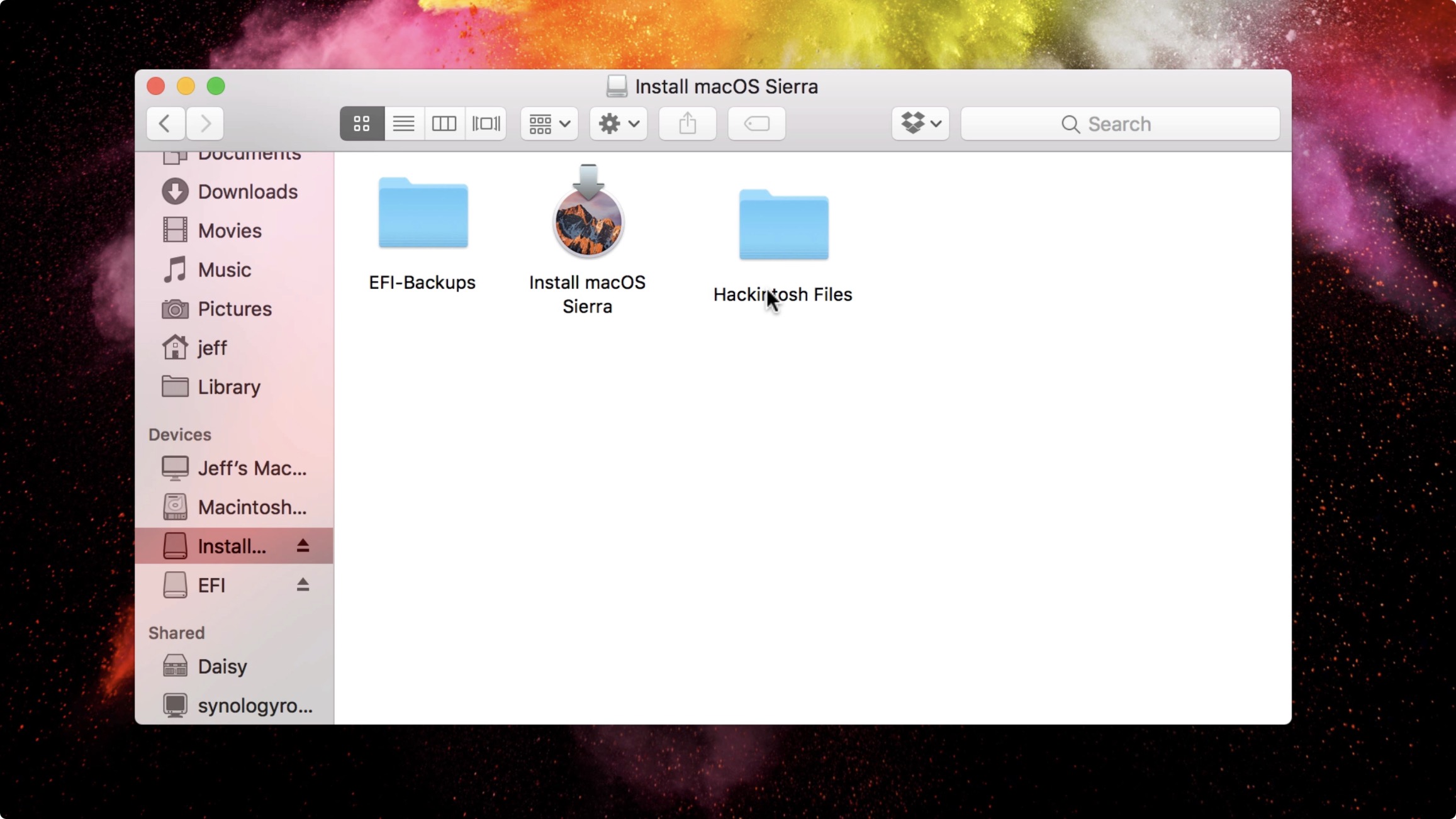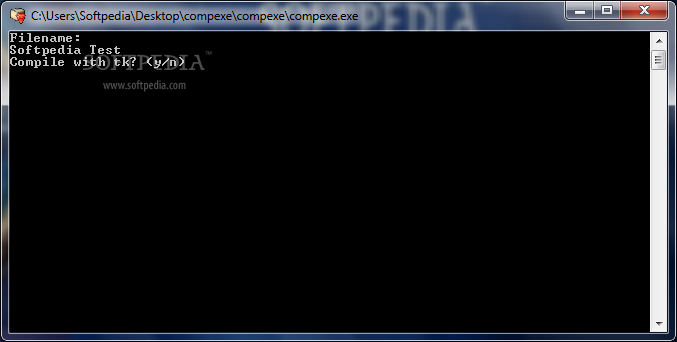This is an issue that really limits my enjoyment of Linux. If the application isn't on a repository or if it doesn't have an installer script, then I really struggle where and how to install an application from source. Comparatively to Windows, it's easy.
- How To Compile C Files
- How To Compile A Driver For Mac Download
- How To Compile A Driver For Mac Windows 10
You're (pretty much) required to use an installer application that does all of the work in a Wizard. So, do you have any tips or instructions on this or are there any websites that explicitly explain how, why and where to install Linux programs from source?
How To Compile C Files
'Comparatively to Windows, it's easy. You're (pretty much) required to use an installer application that does all of the work in a Wizard. Not so much.' There's the weak point in the question.
With Windows, you rarely get the source code, so you're at the mercy of whomever made the package. If you think about this, it's not that much different from saying 'there was no Linux package, so I have to build from source', ie.
There wasn't a way to get it to begin with. Building from source is usually a last resort in.nix-land, but rarely an option in Windows-ville. – Aug 12 '10 at 1:22. Normally, the project will have a website with instructions for how to build and install it. Google for that first. Matt is absolutely right, this is why I said 'for the most part', and first advocated looking up the project's website. The autogen.sh/configure advice will hold for pretty much every GNOME module, and a ton of other projects, too.
Some projects don't use automake, and will only have Makefile, and you will just run make && sudo make install. Some Python projects will only have a setup.py, which you will call to install (since there is no real compile setup). There are plenty of other build/install systems out there, too. Hopefully README or INSTALL files will explain exactly what to do.
– Aug 11 '10 at 13:11. I just want to add that there are package managers that compile packages from source, and handle all package dependencies, flags, etc. In BSD systems it's ports: In Debian, the apt-get package manager can install from source too: (Same goes for Ubuntu, Linux-mint and everything else based on Debian) The Gentoo distribution uses the portage package manager, which compiles the whole system from source only:. Slackware can compile packages but I don't know if there's any package manager for this in there. =) Anyway you can always compile packages manually like Sandy mentioned above =) Also it must be possible to use apt-get or portage package managers in any other distro.
A summary for using the Ports Collection in FreeBSD: Find Port Ports are organized by category so if you don't know what category the port is in you have to find it first: cd /usr/ports make search name=myport Sometimes there are too many entries that way. I personally prefer: find /usr/ports -name myport.print -depth 2 Use the. when searching since there are often multiple versions of a port available. The depth argument ensures your return results aren't needlessly cluttered with matches you are unlikely to want. Configuration Often, you'll want to do some configuration; software such as Apache and Postgres practically require it. There are three main choices: command line, environment and make configuration files. To get started with the command line: make showconfig this will list the default configuration options.

If you like the defaults you are ready to compile and install. If not, make config will bring up a dialog box where you can select which options you want. (Don't become confused with this and make configure which configures your port with your chosen options!) This is often sufficient but for some software, like Apache, there is often complex configuration that a simple dialog won't handle.
For this, you also should look at the Makefile(s) which will sometimes give you some additional targets for make that will give you more information. To continue the Apache example make show-modules make show-options make show-categories will give you information on setting up you chosen modules, thread options and the like. If your port's defaults are mostly fine and you just want to change a few things, you can also just pass key=value pairs like environment variables: make MYVBL1=MYVAL1.
Install clean Also, you can set switch options via the -D option: make -D MYVAR -D MYOTHERVAR. Install clean For complex configuration however the command line won't work well and you're better neither of the first two methods will be effective. In this case you can make a configuration file and pass that to make with the MAKECONF variable. FreeBSD has a default configuration file: /etc/make.conf which usually contains information on previously installed ports and other system settings. To begin, create a file with your ports options, call it /myport.mk and then combine that file with /etc/make.conf: cat /etc/make.conf /myport.mk /make.myport.conf you can then double check your configuration: make showconfig MAKECONF=/make.port.conf and if everything looks good: make install clean MAKECONF=/make.myport.conf BEWARE!
If you need to adjust your configuration settings after make configure or an installation in whole or part you absolutely must clear your configuration first: make rmconfig Failure to do so will result in unexpected interactions between the ports subsystem, your port's make defaults and your desired configuration. That's kind of a lot for a summary, but the complexity of configuration is mostly about the app, not the port. Bash for example, doesn't really have any options. Installation This is the easy part: make install clean or you can make build make install make clean which is just more typing. That's pretty much it.
Obviously there is more you can do such as recursively listing dependencies and configuration options, update with patches and so on. Here I will refer you to the section of the, the port subsystem's man page (good info on additional make targets) and the make man page.
Windows and Linux are two very different systems, and as such, it often isn’t easy to port programs written for one to the other, especially when dealing with GUI programs. Although there are many different cross-platform libraries and SDKs, native programs written without portability in mind are quite hard to port. When it comes to compiling and running programs written for Linux on Windows, there is a solution known as Cygwin. The Cygwin project is a collection of the most common tools and compilers (including the bash shell and the GNU compiler chain) for Windows.
It also includes a library that provides a compatibility layer so that programs which call Linux specific APIs can be compiled. Cygwin isn’t an emulator or virtual machine, and it doesn’t allow Linux binaries to run on Windows without first being re-compiled. Visit the and download the 32-bit or 64-bit setup executable (depending on which variant of Windows you are using). Execute the setup program. Click Next and Next again (to “Install from Internet”). The default directory is “C: cygwin”. It can be changed if needed, but unless you have a specific reason to change it, the default is best.
Click Next, Next and Next again. The Cygwin project has mirror sites all over the world; pick one which you think will best serve your location and click Next. You now need to pick which packages to install.
To compile simple Linux programs in Windows, you will need the GNU Compiler Chain (GCC) which provides a C and C compiler. Type “gcc” in the search box and then click in the small plus sign next to “Devel” in the list of packages. Find “gcc-core” and “gcc-g” and click “Skip” for each one. The word “Skip” will change into a version number and the “n/a” sign in the “Bin?” column will turn into a checked box. Type “make” in the search box and find “make” under “Devel.” Click “Skip” to mark it for install. Search for “wget” and also mark it for install from “Web.” To build the example below, we will also need “libiconv;” search for it and mark it for install.
The installer will then see what other packages need to be installed to resolve any dependencies. Click Next to accept the recommendations. Once all the packages have been downloaded and installed, follow the last steps until the installer exits.
Start the “Cygwin Terminal” to enter into the Linux-like development environment. In the terminal you don’t use Windows commands like “dir” but rather shell commands like “ls”.
To demonstrate how to compile a Linux program under Windows, we will use the from the W3. For a look at what it can do, see.
Download the source files using “wget”. Make The build will fail part way through. I was in two minds about what to do next. Either I could switch to another project and build that from its source or battle on with the HTML-XML-utils. I opted for the latter as it shows that not everything will be a walk-in-the-park when trying to compile Linux programs under Cygwin.

The solution to this particular problem is simple. The error message shows that the linker is unable to find the “iconv” library. A quick look at the link command shows that the library isn’t specified. The quick and dirty solution is to run the command manually and tell the linker to use libconv. The “proper” way to fix this would be to start delving into the Makefile etc. To find out why it isn’t working. Run the following command, noting the inclusion of “-liconv” at the end.
How To Compile A Driver For Mac Download
Once the “hxindex.exe” file is built, you can continue with the rest of the build by typing “make” again. The way “make” works is it checks what has and has not been built, and then it continues the build process at the appropriate point. Since we have manually built “hxindex.exe”, “make” just carries on with the next binary in its list. When “make” completes, you will have all the.exe files in the html-xml-utils-6.7 directory. If you get stuck using Cygwin you should look at the, and at the. Failing that, the project has a set of. If you have any problems with the steps described above, then please use the comments section below.
How To Compile A Driver For Mac Windows 10

When I try to run./configure I get all the way up to here: checking for library containing iconvopen no configure: error: no iconv library found, will be unable to compile and then for some reason it can’t find my libiconv installation. Its definitely there.
I have an iconv.exe in my bin directory and iconv.h in my usr/include directory. In the iconv.h file I found these lines: #ifndef LIBICONVPLUG #define iconvopen libiconvopen #endif extern iconvt iconvopen (const char.
tocode, const char. fromcode); Could the #ifndef LIBICONVPLUG part be stopping it from defining iconvopen? I don’t think that’s the case since I can still run iconvopen from the terminal and it finds something.